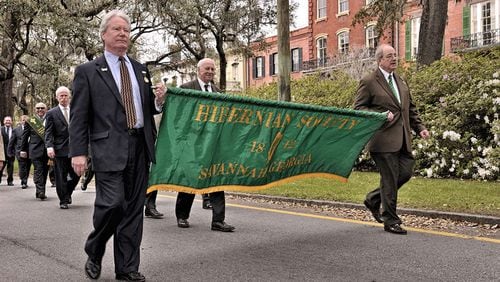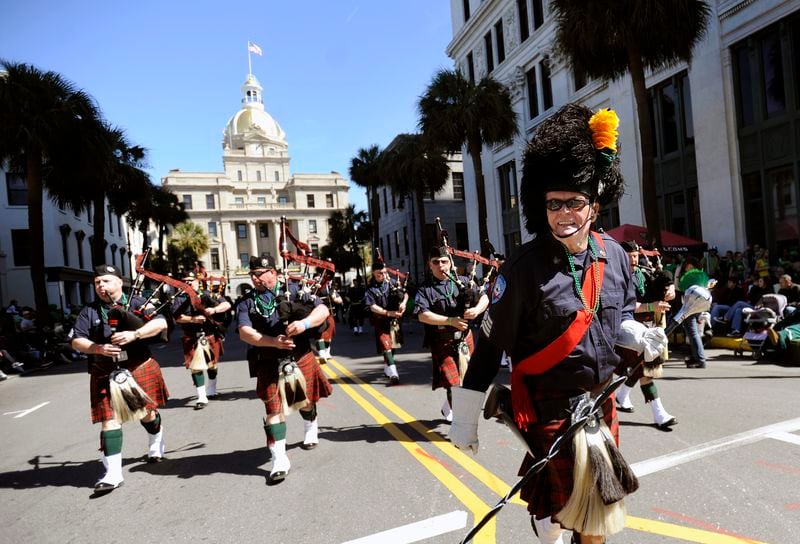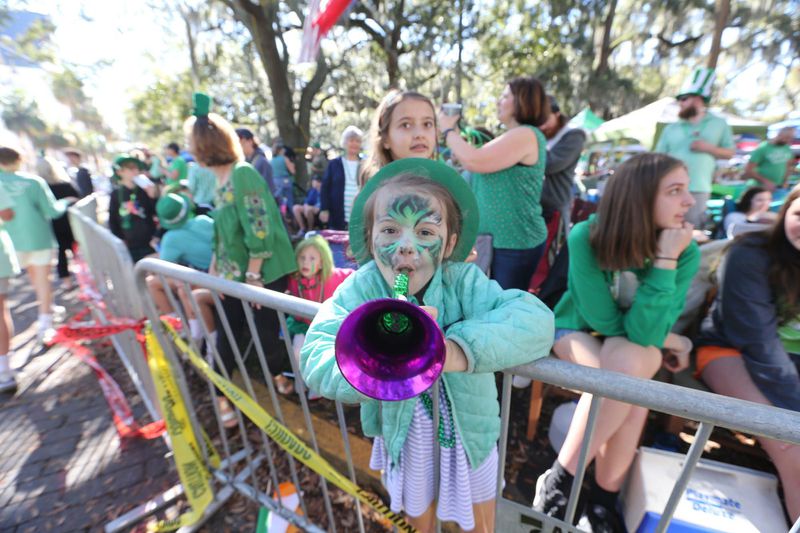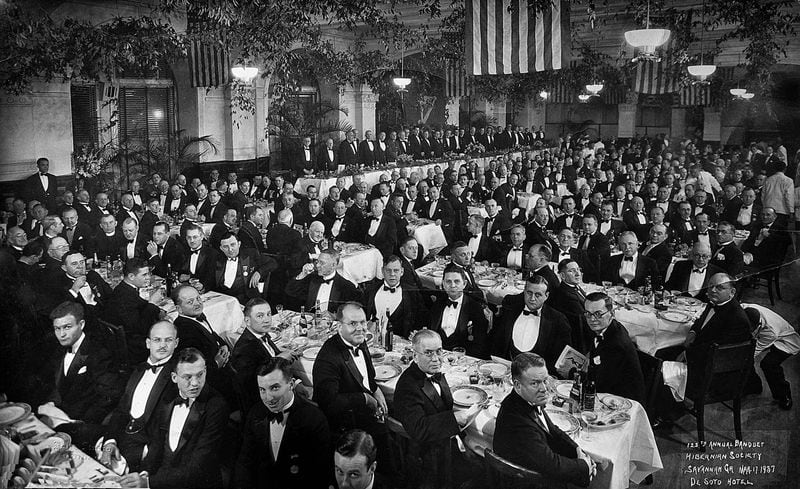SAVANNAH — Scour the statuary centerpieces of this city’s famed squares. Search the historic house museums that dot the streets. Even in this city, where almost 300 years of history is everywhere, nowhere will you find tribute to the founders of arguably Savannah’s best-known institution, the St. Patrick’s Day Parade.
The legacy of John Cumming, his son George Cumming, Moses Cleland and Col. James Hunter will be commemorated this week on the 200th anniversary of the Irish heritage bash. The four Irishmen were leaders of Savannah’s Hibernian Society, a group begun by residents of Irish descent in 1812 to assist a wave of poor Irish immigrant laborers coming to America.
In 1824, the Hibernians organized an event that turned into a public parade celebrating St. Patrick’s Day. That parade has grown into what today is billed as the nation’s second-largest, behind only New York City, and is expected to attract hundreds of thousands of spectators for Saturday’s bicentennial.
Today, the parade is organized by the Savannah St. Patrick’s Day Committee, formed in 1926 by Hibernian Society members and other local Irish Americans. And the celebration has become a part of Savannah lore, much like the statues in the squares, the Girl Scouts’ first headquarters and the novelish “Midnight in the Garden of Good and Evil,” known locally as “The Book.”
“The parade has come to mean so much to Savannah,” said John Jurgensen, who serves on the Hibernian Society’s communications committee. “People talk about Savannah, they talk about ‘The Book’ and they talk about the parade. And it started with the Hibernians.”
Aside from a small number of parade history buffs and members of the Hibernian Society, few know the story of the Cummings, Cleland and Hunter. The quartet formed the core of the Hibernian Society, which was open to Irishmen of all faiths. The Cummings, Cleland and Hunter were Protestants, immigrants from Ulster, Ireland’s northern province.
Credit: AP
Credit: AP
Yet, in March of 1824, they invited the Deep South’s first — and, at the time, only — Roman Catholic bishop to speak on the Feast of St. Patrick in Savannah.
Bishop John England was a charismatic speaker and well-known among Irishmen of all faiths along the Southeast coast for his political activities back home. According to Howard Keeley, director of Georgia Southern University’s Center for Irish Research and Teaching, the Charleston, South Carolina-based cleric came to Savannah to “make a splash.”
On March 17, 1824, England led a half-mile procession from the site of the Hibernian Society’s annual meeting, the City Hotel, to what was then Savannah’s only Catholic church, St. John’s, on Liberty Square. There, with Presbyterian and Episcopalian clergymen by his side, he delivered a rousing tribute to St. Patrick, the fifth-century missionary who brought Christianity to Ireland.
England then guided attendees back to the hotel for the Hibernian Society dinner, a tradition still alive today. His toast during that gathering cited the ecumenical example set by the Hibernians and proclaimed that religious bigotry “is not permitted to destroy the harmony of society.”
England’s public address was the main attraction that day, not the walks between the meeting site and the church, said Hibernian Society historian Jack Jaugstetter. But those comings and goings fostered a tradition. Since that first parade, St. Patrick’s Day in Savannah has, in the words of 2024 Grand Marshal John Forbes, been a celebration of Irish heritage for “the Irish and Irish at heart.”
The parade’s founding fathers
The parade’s origins have long fascinated Savannahians.
Irish immigrants were among Savannah’s first settlers. Like many other early Georgians, the Irish came seeking religious freedom.
Georgia’s Irish population grew steadily during the Colonial period and again around the turn of the 19th century, with political refugees from the failed Irish revolution of 1798 and former soldiers from the Napoleonic wars crossing the Atlantic.
Credit: Savannah Morning News
Credit: Savannah Morning News
By 1812, Savannah was home to Presbyterians from Ulster; Catholics largely from the provinces of Connaught, Leinster and Munster; and Anglicans whose ancestors migrated to Ireland from England. These Irish Savannahians banded together to form the Hibernian Society, naming John Cumming as their first chair.
The Cummings, Cleland and Hunter were active leaders of the Independent Presbyterian Church, founded in 1755. The church’s archives go back to the congregation’s beginning, and archivist Glen Umberger found all three families listed in pew records.
The Hibernians’ high holiday
Like the city it calls home, the parade has experienced growth that modern-day Hibernians struggle to comprehend.
“It’s sure not like it used to be,” said Jaugstetter, who marched in his first Savannah St. Patrick’s Day Parade as a schoolboy in 1947. “Not better or worse. Just different.”
Jaugstetter and Jurgensen remember attending parades where the overwhelming majority of participants were Irish families and kids from the local Catholic schools. Savannahians would park their cars along the parade route an hour before the start and watch the procession from truck beds and car hoods.
Today, more than 250 entries, including commercial floats, Alee Shriner clubs and even the Budweiser Clydesdales, entertain onlookers along the closed 2 1/2-mile route.
Credit: Hibernian Society
Credit: Hibernian Society
As for the Hibernians, the society continues to celebrate St. Patrick’s Day as its high holiday. The group considers parade day its anniversary and holds its annual meeting in the afternoon and a dinner that evening, just as members did 200 years ago.
The Hibernians’ rolls top 400 members with a 25-year-long waiting list.
“For us, St. Patrick’s Day is a reunion type of celebration,” Jaugstetter said. “Members come back to town who have moved away every year. It’s a homecoming.”
About the Author










